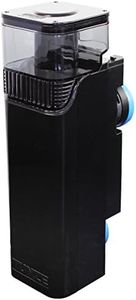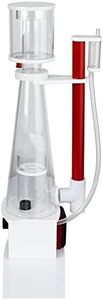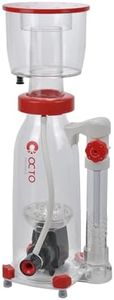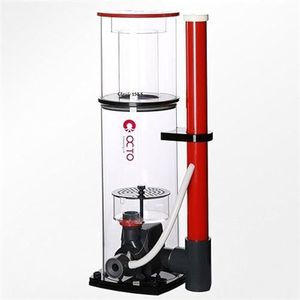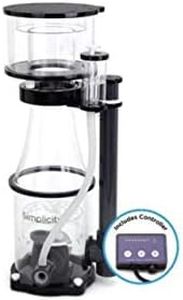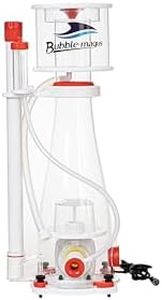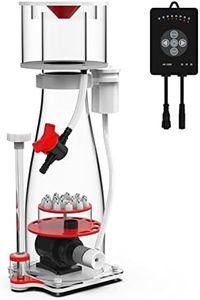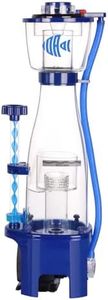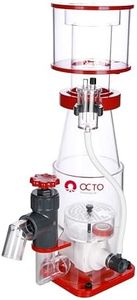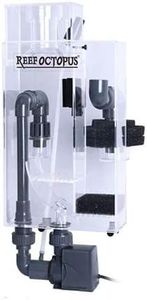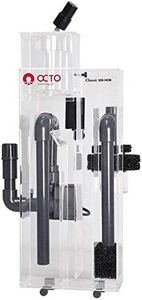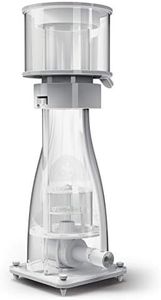We Use CookiesWe use cookies to enhance the security, performance,
functionality and for analytical and promotional activities. By continuing to browse this site you
are agreeing to our privacy policy
10 Best Protein Skimmers
From leading brands and best sellers available on the web.Buying Guide for the Best Protein Skimmers
Choosing a protein skimmer is important for maintaining a clean and healthy aquarium, especially in marine or reef setups where water quality needs careful management. A protein skimmer works by removing organic waste and dissolved proteins from the water before they break down into harmful compounds. The right protein skimmer for you depends on the size of your aquarium, the type of livestock, and how much maintenance you want to do. When comparing models, it’s helpful to look at the core specifications and understand how they relate to your needs and setup.Skimmer CapacityThis spec tells you the maximum aquarium size (usually in gallons or liters) that the skimmer is designed to handle. It's important because an undersized skimmer won't efficiently remove waste, while an oversized one may not work at peak efficiency in a smaller tank. Skimmer capacities often come in ranges, like for tanks up to 50, 100, or 200 gallons. If your tank load is heavy (lots of fish or corals), choose a skimmer rated for a slightly larger system. For lightly stocked tanks, you can match the skimmer capacity more closely to your tank size.
Footprint/SizeThis refers to the physical dimensions of the skimmer, especially its base area (footprint), height, and overall shape. It's important because the skimmer needs to fit in the available space, whether in your sump, filter chamber, or hang-on location. Compact skimmers are best for small or crowded spaces, while larger skimmers need more room but may offer better performance. Measure your available installation space before choosing, and make sure to include enough clearance for maintenance.
Type of InstallationThis describes whether the skimmer is intended for use inside a sump (in-sump), hung on the back of the tank (hang-on-back), or used externally (external skimmers). This matters because your filtration setup and available space dictate which types will fit. In-sump skimmers are common in larger tanks, hang-on-back skimmers suit tanks without sumps, and external models are for specialized installations. Choose the one that matches your tank setup and your ease of access for cleaning.
Pump Type and PowerThe pump’s type and wattage affect bubble production and skimmer efficiency. Some skimmers use needle wheel or venturi pumps to create fine bubbles, increasing waste removal. A stronger pump can process water faster but may use more energy or create more noise. Look for a pump matched to your skimmer’s size and design. If quiet operation or energy use matters to you, compare noise levels and power consumption. For heavy bio-loads, prioritize skimmers with robust pumps.
Noise LevelNoise level affects how pleasant your aquarium environment is, especially if it's in a living area. Some skimmers are nearly silent, while others hum or make bubbling sounds. Skimmers often have noise-reducing features like silicone feet or mufflers. If you need a very quiet operation, check user reviews and look for skimmers designed specifically for low noise.
Ease of MaintenanceEase of maintenance includes how simple it is to clean the collection cup, access the pump, or take apart the skimmer for deep cleaning. This is important because regular cleaning keeps the skimmer working efficiently and prolongs its lifespan. Some models have quick-release mechanisms or fewer parts for easier servicing. If you prefer less frequent or simpler maintenance, look for skimmers designed with user-friendly features.
